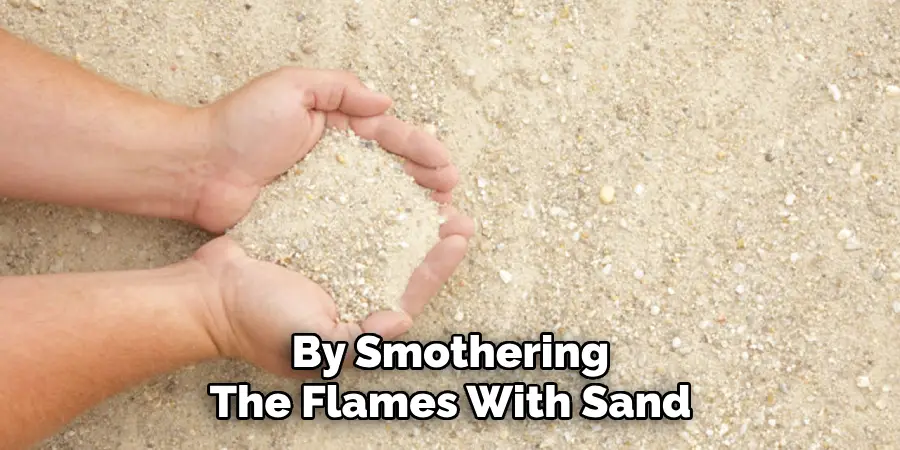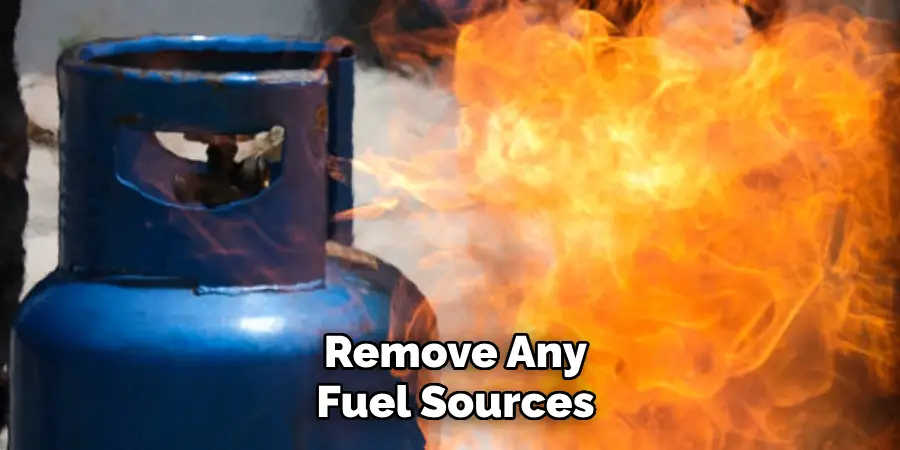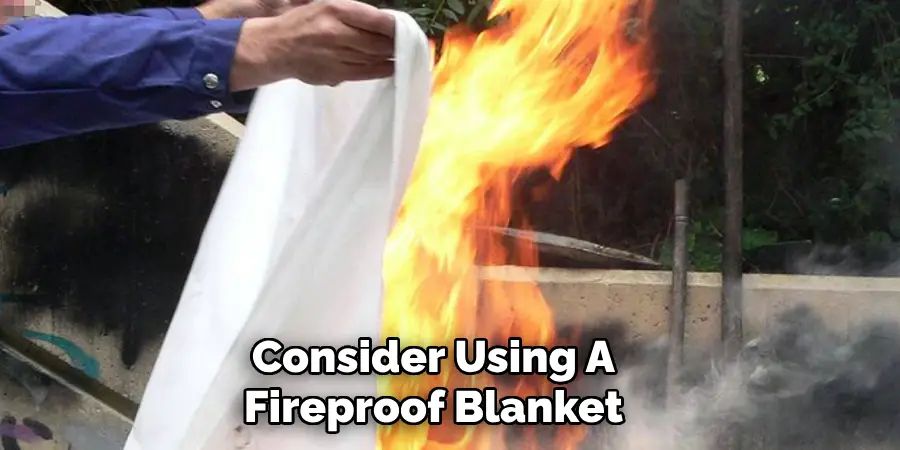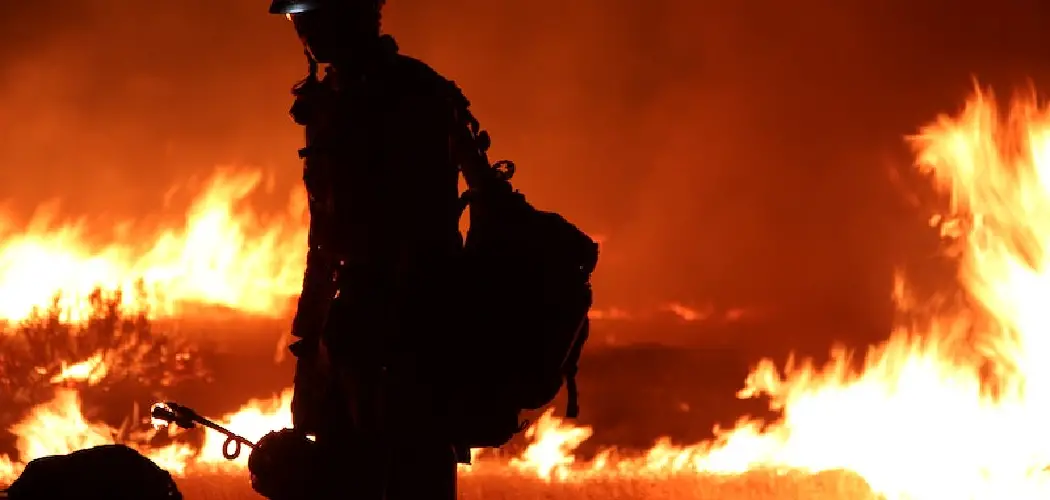Fire pits provide a cozy and inviting ambiance to any outdoor gathering, but knowing how to safely extinguish the flames is just as crucial as kindling them. While water is the most common method to douse a fire, there are situations where it might not be readily available or practical.
Whether you’re enjoying a serene evening in your backyard or camping in the wilderness, having alternative techniques for extinguishing a fire pit without water is essential. In this article, we will explore various methods and strategies for how to put out a fire pit without water.

From using sand and dirt to employing specialized fire extinguishing tools, you’ll discover practical tips and step-by-step instructions to ensure your fire pit experience remains both enjoyable and secure.
So, whether you’re a seasoned outdoor enthusiast or a novice fire pit enthusiast, read on to learn how to safeguard yourself and the environment while extinguishing those warm, crackling flames.
Importance of Knowing Alternative Methods to Extinguish a Fire Pit
It is important to know how to put out a fire pit without water in case you do not have access to this essential element. This knowledge can ensure your safety and the safety of others in the event of an emergency.
Additionally, knowing alternative methods to extinguish a fire pit can also help protect your environment from potential hazards that may result from burning fires or uncontrolled fires. Knowing how to put out a fire pit without water can help prevent potential disasters and ensure that your outdoor gatherings remain safe and enjoyable.
In the event you do not have access to water, there are other options available for putting out a fire pit safely. One of the most popular alternatives is using sand or dirt to cover the flames. Sand is an excellent choice for fire pit extinguishing because it cuts off the oxygen supply to the fire and helps snuff out the flames.
Additionally, sand is non-toxic and will not produce any dangerous fumes or smoke as it smothers the flames. Similarly, dirt can also be used in this manner; however, it does not necessarily provide complete coverage over a large area like sand does.
The Potential Challenges of Using Water to Put Out a Fire Pit
The heat of a fire pit can be intense, so it’s not always possible to access the source of the flame in order to safely use a water-based approach. Additionally, if the fire pit is situated near an electrical outlet or other combustible materials, using water could potentially cause further damage. As such, it’s important to consider alternative methods for putting out a fire pit without water.
One way to do this is by smothering the flames with sand or baking soda.

The key here is to make sure that the flame is completely covered and that no oxygen can get into the firepit. This will cause the fire to burn itself out over time, although it may take several hours before it is fully extinguished.
Another way to put out a fire pit without water is to use a fire extinguisher.
Most fire extinguishers come with instructions for proper usage, so be sure to read the documentation before attempting to put out a flame. Fire extinguishers are generally made of chemicals and can potentially cause further damage if not used correctly, so it’s important to take extra caution when using one.
Finally, it’s also possible to use a fire blanket to put out a fire pit without water. Fire blankets are designed to smother the flames and prevent the spread of smoke or heat, making them a viable option for safely putting out a fire. Before using a fire blanket, be sure to read the instructions carefully in order to ensure that it is used correctly.
10 Steps How to Put Out a Fire Pit without Water
1. Smother the Fire
The first step to putting out a fire pit without water is to smother the flames. To do this, you will need to cover the fire with sand or dirt. This will help to deprive the fire of oxygen and will eventually cause it to extinguish itself. Make sure that you are wearing protective gear when doing this, as there may still be hot embers underneath the sand or dirt.
2. Remove Fuel Sources
The next step is to remove any fuel sources from the area around the fire pit. This includes wood, paper, or other flammable materials that could reignite the fire if left in place. It is also important to make sure that there are no combustible liquids nearby, such as gasoline, oil, or alcohol.

3. Let it Cool
Once all of the fuel sources have been removed from the area, it is important to let the fire pit cool down completely before attempting to move it or dispose of it. This can take several hours and should not be rushed as it could cause injury if done too quickly.
4. Shovel Ash and Debris
Once the fire has cooled down completely, you can begin shoveling out any ash and debris that remains in the pit. Make sure that you are wearing protective gear while doing this as there may still be hot embers underneath the ash and debris that could cause burns if touched directly with bare skin.
5. Dispose of Ash and Debris
Once all of the ash and debris have been removed from the fire pit, they should be disposed of properly in a metal container away from any combustible materials such as wood or paper towels. The ashes should never be put into a plastic bag as they could easily ignite if exposed to heat or sparks from another source such as an electrical outlet or stovetop burner.
6. Clean Inside of Pit
After all of the ash and debris have been removed from inside of the pit, you can begin cleaning out any remaining soot or residue by scrubbing with a wire brush and soapy water solution until all traces of smoke have been eliminated from inside the pit walls and flooring surfaces. Once finished, rinse off with clean water and allow time for drying before using it again for future fires in your backyard space.
7. Inspect for Damage
Before using your fire pit again for future fires in your backyard space, you must inspect for any possible damage caused by previous use including cracks in walls/flooring surfaces due to extreme heat levels generated throughout the burning process; broken/missing pieces on frame; loose bolts/nuts which may need tightening; etc…
If damage is found then repairs must be made before continuing use otherwise risk having further complications arise during next use leading up potential injury/fire hazard situations occurring during future uses.
8. Reassemble Fire Pit
Once repairs have been made (if needed), then reassemble your fire pit back together, making sure all pieces fit securely in place (including replacement parts) so that no gaps remain between components, which could lead to potential air leaks causing smoke build-up within enclosed space, during future burning processes.
9. Add Fresh Fuel Source
After reassembling your fire pit back together add a fresh fuel source (wood logs) which will provide the necessary fuel needed during the burning process allowing for a more efficient combustion process taking place within the enclosed space.
10. Ignite Fire Pit
After adding fresh fuel source last step would involve igniting your newly assembled/repaired fire pit allowing for a safe & efficient burning process taking place within an enclosed space providing warmth & ambiance desired by family/friends gathered around enjoying the evening outdoors.
Things to Consider When Putting Out a Fire Pit without Water
- Make sure you do not leave any embers or coals burning when trying to put out your fire pit without water. Doing so could be a dangerous fire hazard.
- Ensure the area around your fire pit is clear of flammable materials such as leaves, branches, dry grass, etc. These materials can easily catch fire if exposed to high temperatures.
- Consider using a fireproof blanket or tarp to cover the fire pit and smother the flames. This will help contain any smoke or sparks that may be emitted while cooling the coals down.
- Use a shovel to stir the ashes and embers after covering them with a blanket or tarp, as this will help disperse any remaining heat and prevent flare-ups.
- When the ashes and embers are cool to the touch, it is safe to discard them in a metal container or bury them away from any combustible materials.

Conclusion
Ensuring a fire pit is out is absolutely critical for not only safety but also protection of the environment. If no water source is available, it’s important to understand how to put out a fire pit without having to resort to conventional means. As outlined in this blog, sand can be an effective way to smother the flames and put out the fire.
Additionally, a lack of oxygen and the use of a smaller device, like a shovel or metal can, can also be employed. Lastly, covering the remains with dirt or ash will ensure nothing reignites beneath the surface.
Ultimately, learning how to put out a fire pit without water can prove beneficial in situations where other resources are unavailable. With these tips in mind, putting out campfires safely and efficiently won’t be such an arduous task!
About
Outdoor Fixes is a distinguished figure in the world of Diy design, with a decade of expertise creating innovative and sustainable Diy solutions.
His professional focus lies in merging traditional craftsmanship with modern manufacturing techniques,
fostering designs that are both practical and environmentally conscious. As the author of diy,
outdoorfixes delves into the art and science of outdoorfixes-making, inspiring artisans and industry professionals alike.
Education RMIT University
(Melbourne, Australia) Associate Degree in Design (Outdoor Fixes) Focus on sustainable design, industry-driven projects,
and practical craftsmanship. Gained hands-on experience with traditional and digital manufacturing tools, such as CAD and CNC software.
Nottingham Trent University
(United Kingdom) Bachelor’s in outdoorfixes.com and Product Design (Honors) Specialized in product design with a focus on blending creativity with production
techniques. Participated in industry projects, working with companies like John Lewis and Vitsoe to gain real-world insights.
Publications and Impact
In diy, Outdoor Fixes his insights on indoor design processes, materials, and strategies for efficient production.
His writing bridges the gap between artisan knowledge and modern industry needs, making it a must-read for both budding designers and seasoned professionals.

